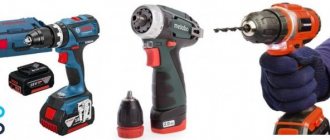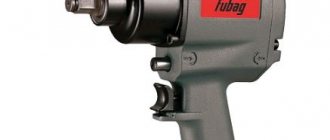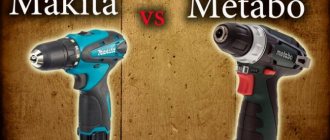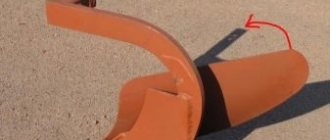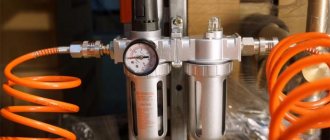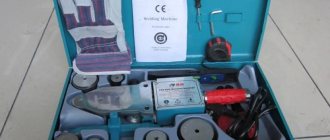Modern construction work includes a fairly large volume of fastening elements. Tightening them manually would require a huge amount of effort and time. But, through the use of modern screwdrivers, this process is greatly simplified, which allows you to perform all the necessary work faster and with better quality. The only question that ordinary people have in connection with their wide variety is how to choose a screwdriver specifically for themselves.
In order to choose the most suitable model, you need to decide on the existing options for screwdrivers and their purpose. First, choose what you will use it for.
Why do you need a screwdriver?
Initially, choose what function this device will perform in your home or work:
- For screwing or unscrewing a variety of fasteners;
- More powerful tightening of a dowel or anchor, insertion of a self-tapping screw, etc.;
- Drilling in soft or hard material;
- Thread cutting;
- Mixing construction mixtures.
Based on the above tasks, study the most relevant technical characteristics and differences of screwdrivers specifically for your needs.
Torque for gasoline and diesel engines
Gasoline engines do not have the highest torque. The torque of a gasoline engine reaches its maximum value at speeds of no less than 3-4 thousand rpm. However, a gasoline engine can quickly increase power and spin up to 7-8 thousand rpm. At such ultra-high speeds, power increases significantly.
The diesel engine does not have high speeds. Usually this is 3-5 thousand rpm maximum, and here it loses to gasoline engines. However, the torque of a diesel engine is several times higher, and it becomes available very quickly, almost from idle.
As a specific example, we can recall tests of two engines from Audi - one diesel: 2.0 TDI with 140 hp. and a torque of 320 N.m, and the second petrol: 2.0 FSI with a power of 150 hp. and torque 200 N.m. Based on the results of a test run in various modes, it turns out that the diesel engine is as much as 30-40 hp. more powerful than a gasoline engine in the range from 1 to 4.5 thousand revolutions. That's why you shouldn't look only at horsepower. It happens that an engine with a smaller displacement, but with high torque, shows itself to be much more dynamic than an engine with a large displacement, but low torque.
In the technical specifications that are indicated for each car and its engine, the maximum torque is always indicated in combination with the speed at which such torque can be achieved. In this case, it is usually considered: if the maximum torque can be achieved at speeds up to 4.5 thousand rpm, then such an engine can be called low-speed; and if more than 4.5 thousand rpm - then high-speed.
At a low number of revolutions, a small amount of air-fuel mixture enters the combustion area per unit of time, so torque and power are low. By increasing the speed, the amount of the fuel-air mixture (and subsequently the power and torque) increases. Having reached significant parameters, power begins to decrease due to mechanical losses due to friction of mechanisms; inertial losses; from insufficient air injection (called oxygen starvation).
To ensure maximum amounts of air entering the combustion chamber, even at low engine speeds, electronically controlled turbocharging systems are used. By using such turbocharging systems, it is possible to ensure uniform torque characteristics over a wide range of engine speeds.
Types of screwdrivers
Depending on the tasks and parameters to be solved, all screwdrivers are divided into professional and household models.
Household
A household screwdriver has relatively low power and short service life. They are great for working on soft materials (wood, plasterboard, MDF, chipboard, etc.). But they cannot be used for a long time. Such models are chosen to solve various one-time household tasks - assembling furniture, installing a lock, blinds, shelves and other elements of the home interior.
Professional
A distinctive feature of professional models is a long period of operation, in comparison with household ones. They can perform their functions for 5 – 8 hours a day every day without loss of performance. Also, in addition to the standard unscrewing and tightening of self-tapping screws, they are equipped with the function of drilling metal, concrete and wood. For drilling concrete, professional tools are equipped with a hammer mechanism.
Additional functions
As usual, these functions are not mandatory, but they significantly increase ease of use. Some, if they raise the price, do not raise it significantly, while others raise it quite significantly. To choose the most inexpensive screwdriver, you can get by with the minimum - reverse and the presence of illumination of the work area. The rest, of course, are useful, but are more suitable for professionals.
Some additional features are very useful
Reverse or reverse
The presence of this option allows you to unscrew a screw or drill stuck in the material. The direction of rotation changes when the polarity of the power supply changes, which is done through a special button. It is usually installed near the trigger lever.
Examples of the location of the reverse button in a screwdriver
Most often, the button for switching the direction of travel has three positions: on average, the tool is blocked. This increases safety: if you accidentally touch the lever, the screwdriver will simply stop, rather than immediately start rotating in the opposite direction.
Work area lighting
A very convenient option that does not greatly affect the price of the screwdriver is illumination of the work area. With good lighting it is much easier to control the instrument.
Illumination of the work area is a useful additional function of a screwdriver
An LED is built into the handle or body of the tool near the chuck, which lights up when the start button is pressed. If you want to choose a screwdriver that is convenient to work with, make sure that the work area is illuminated.
Battery indicator
If you decide to choose a cordless screwdriver, it would be a good idea to have a battery charge indicator. These are LEDs of different colors - green, yellow, red, which are located on the body. If the light is green, the charge is full; if it is red, the charge is almost empty.
Battery indicator
The location of the indicator depends on the company, but is usually located on the thickening of the handle, in the same place as the backlight LED, or in the upper part of the case.
Automatic feeding of screws
Such screwdrivers are also called shop screwdrivers. This option is useful for professionals, especially those who work with drywall, where fasteners must be installed in small increments. Self-tapping screws are attached to a special tape, tucked into guides, and automatically fed into the holder.
Screwdrivers with automatic fastener feed
This option can be implemented in two ways: there are store-bought screwdrivers (pictured on the left) and there are attachments for a regular screwdriver. For home use, the second option is preferable, since the tool can work as a drill or in reverse. A shop screwdriver is highly specialized equipment for professional use.
Mains or battery
Rice.
1: Cordless and corded Depending on the method of receiving power, all screwdrivers are divided into corded and cordless. The first option receives power supply via a power cord; they are much more efficient due to constant power and due to the absence of the need to monitor the amount of charge. But, in comparison with cordless screwdrivers, they cannot be used in places where there is no 220 V electrical network and they are quite heavy. A separate disadvantage of corded screwdrivers is that they are powered by a dangerous voltage level, while cordless screwdrivers are powered by low voltage and do not pose a threat to the operator in case of breakdowns.
Cordless screwdrivers are portable - they can be used in places where there is no power supply at all or where it is impractical to carry a bulky tool. Such models are distinguished by their relatively light weight and dimensions, but they are more expensive and can run out of charge at the most inopportune moment. The main parameter that you should pay attention to when choosing a cordless screwdriver is the type of battery and its capacity.
Battery types
Rice.
2: Battery types Battery types determine the most important parameters - the operating time of the screwdriver, the need for a complete discharge, charge duration, service life and the price of the electric tool itself. Today there are four types of batteries:
- Lithium-ion , designated as a li-ion battery, holds a charge for quite a long time compared to others, also accumulates it quickly and does not require complete discharge. Today, this is the most effective option for construction and electrical installation operations; its main disadvantage is its high cost, so it is better not to choose screwdrivers with such a battery for single jobs.
- Lithium polymer , designated as li-pol battery, has the largest capacity among rechargeable batteries for screwdrivers, but it fails faster than others.
- Nickel-cadmium batteries , designated as ni-cd batteries, have the longest service life, about 5 years, compared to about 3 years for others. This option is also low cost. Disadvantages include a long charging period and the need for a complete discharge.
- Nickel-metal hydride batteries , designated as ni-mh batteries, are characterized by good battery capacity, unlike other models, they have significantly less weight with the same battery capacity. Due to this, such a cordless screwdriver is smaller in size, but also much more expensive.
For home use, it is better to use nickel-cadmium models; due to their infrequent use, their long charge is not so critical for you, and a long period of operation will allow you to forget about replacing for a long time. Lithium-ion and nickel-metal hydride screwdrivers are well suited for professional work.
Chuck type
There are two types of screwdriver chuck: key and quick-release. The quick-release (usually has three blades) allows you to change attachments in a matter of seconds - the cartridge is turned a little by hand, the nozzle is changed, after which it is again turned a little in the opposite direction. In addition, there is another positive point: in such a holder it is fashionable to install a nozzle of any thickness. The main thing is that the shank fits into the holder.
Types of screwdriver chucks
The same operation with a key cartridge requires a special key. It is inserted into a special socket and turned until the nozzle is released. After replacement, the key turns in the opposite direction. The disadvantage is obvious: you need to have this key on hand.
According to their structure, quick-release chucks can have one or two couplings. If there are two couplings, one of them fixes the cartridge, the second – the shaft. If there is only one clutch, then there is a shaft lock button on the body.
Choosing a screwdriver based on this parameter is not difficult - usually everyone agrees on quick-clamping ones. They allow you to fix larger nozzles, although all other things being equal they are a little more expensive.
Technical specifications
In addition to the above differences, each screwdriver should be selected according to a number of technical parameters. To do this, carefully study each of them and decide which one is best for you.
Motor: brushed or brushless
According to the type of motor used to rotate the spindle, all screwdrivers are divided into commutator (brush) and brushless (inverter).
Rice. 3: engine comparison
Look at the picture, here is a fundamental difference - the brush version has graphite brushes for current collection. The main advantage of such an engine is its low cost. The disadvantage is large losses at the point of sliding contact and low efficiency.
Brushless has many more advantages:
- The rotation speed of the drill can be easily adjusted, and in a much wider range;
- Tolerates short-term overloads well;
- The efficiency is 30% higher than the collector version;
- Longer service life before failure;
- Due to the lack of sparking, it can also be used in explosive areas;
- Provides equal speed in both directions and engine speed does not decrease when load is applied to the chuck.
Its main disadvantage is its higher cost, which is why brushless screwdrivers are suitable for professional activities where saving battery power and maintaining basic characteristics during long-term operation are important.
Power
The power parameter for such a construction tool directly determines its ability to drill holes, screw in self-tapping screws, or just disassemble simple structures. As such, the motor power on a screwdriver is determined from the product of voltage and current in the winding. For those connected to the electrical network, the voltage is known in advance - 220 V, these are quite powerful models that can perform any task.
But the battery options are designed for supply voltages of 3, 6, 10, 15, 18 and 36 V. Accordingly, the higher the voltage you choose, the more power you will get from the cordless drill/driver.
Torque
This parameter is measured in Newton meters (Nm). Depending on the torque generated, the screwdriver will be able to tighten loose fasteners or drill wood, metal and other materials. In total, there are three categories of torque among models for domestic use:
- from 30 to 40 Nm – suitable for drilling hard surfaces (wood, brick, metal);
- from 20 to 30 Nm – copes well with screwing screws into various surfaces;
- up to 10 Nm - suitable for repairing interior items, toys, equipment where the screws are already tightened; in everyday life such models are called electric screwdrivers.
Professional screwdrivers can have a torque of up to 130 Nm. But for home use, a force of more than 40 Nm will be unnecessary. Some screwdrivers are equipped with a torque regulator; it is made in the form of a handle with corresponding divisions.
Rice. 4: Effect of torque adjustment on tightening force
Rotation speed and number of speeds
When choosing a rotation speed, they are guided by the following indicators:
- Within 400 - 800 rpm - for unscrewing screws, on most models the rotation speed can be adjusted within smaller limits;
- From 800 to 1300 rpm - intended for drilling holes;
- From 1500 to 3000 rpm - professional, designed for light types of finishing work, can work not only in drill mode, but also in hammer drill mode.
Some screwdrivers may have several rotation options; for this purpose, they are equipped with a speed switch, which will allow you to select the most suitable mode.
Chuck type
According to the type of chuck, all models are divided into: quick-release, key and hexagonal.
Rice. 5. Chuck type
Look at the picture, all types of cartridges are presented here. The key is used for powerful models equipped with an impact mode, as it allows you to securely fix the working element of the screwdriver.
The hex chuck allows you to change bits very quickly, but they are extremely weakly fixed in the socket. Therefore, this option is used only in low-power screwdrivers.
The quick-release chuck is universal because it allows you to quickly change bits and ensure their good fixation.
Operating modes
The main operating mode for a screwdriver is tightening and unscrewing fasteners. But, in addition to the main one, you can find a tool with:
- Impulse – designed to remove a tightly seated or rusted screw from its place;
- By impact - helps to carry out light finishing operations, but cannot fully replace a hammer drill; in most cases it is used for screwing self-tapping screws into hard materials;
- Drilling – allows you to obtain holes of a certain diameter, which corresponds to the diameter of the drill.
Availability of reverse
The reverse button allows you to rotate the screwdriver in the opposite direction. This function helps to work with different thread directions when standard rotation does not help. Also, the presence of reverse allows you to unscrew or loosen fasteners that are already screwed in. This greatly simplifies the disassembly/assembly of furniture, appliances, etc.
Convenience and design
To select a specific screwdriver, it is advisable to hold it in your hands - the handle should fit comfortably in the palm of your hand. This parameter is especially important for professional models, since prolonged work can lead to hand rubbing. If you are going to hold it in one hand, pay attention to the balance - a pistol-type screwdriver would be most suitable.
Illumination of the drilling site - helps to navigate more accurately in poor lighting conditions. Thanks to this function, you will accurately install the drill at the desired point.
Rice. 6: Illumination of the drilling site
The presence of various attachments allows you to work with different types of fasteners. Please note that using the appropriate bit allows you to keep both the self-tapping screw and the replaceable nozzle intact.
Figure 7: What are the different types of attachments for?
Practical work
All types of wood material are divided into hard, soft and medium. The table shows values for wood moisture content from 12% to 15%
| Breed | Density g/cm3 | Hardness |
| Soft | ||
| Siberian fir | 0,39 | 420 |
| Spruce | 0,45 | 660 |
| Average | ||
| Aspen | 0,51 | 420 |
| Pine | 0,52 | 380 -1240 |
| Linden | 0,53 | 400 |
| Solid | ||
| Birch | 0,65 | 1260 |
| beech | 0,66 | 1300 |
| Larch | 0,66 | 1200 |
| Oak | 0,69 | 1360 |
| Yew | 0,75 | 1200 |
| Ash | 0,75 | 1320 |
| Plum | 0,8 | ~ 1200 |
| Apple tree | 0,9 | ~ 1200 |
| Boxwood | 0,96 | 2100 |
Ash, yew, and some types of fruit trees are super hard trees. To work with material of the first group, you will need a screwdriver with a lower Nm rating. Accordingly, you need to screw a self-tapping screw into birch or larch with a tool whose torque is equal to the larger value.
As an example, we give a table that shows the dimensions of the screws and the value for them considered in the review. The material chosen for the work was common wood belonging to the middle group in terms of species density, pine.
| Screw dimensions (mm) | Max. torque (Nm) |
| 5x90 | 7,24 |
| 5x50 | 5,36 |
| 4x90 | 4,92 |
| 4x50 | 3,56 |
These data hardly took into account all the factors during operation: screwdriver speed, material moisture. The indicator under consideration must be selected with reserve, also taking into account that in future work the material may be a harder type of wood.
Torque is adjusted to fit the mounting size
Review of the TOP 10 best models of this year
The modern market offers a fairly large selection of screwdrivers from a variety of manufacturers. As statistics show, each of them is in demand to varying degrees.
Figure 8: Sales statistics by brand
Look at the picture; a small percentage of sales does not mean low quality, since these models may simply be inaccessible to the general public due to the high cost of the screwdriver. So, the same Bosch sells models of no less quality than Makita, but the price forces buyers to give preference to the latter.
The most popular models today are the following screwdrivers:
| Model name | Short description | Advantages | Flaws |
| Makita DDF343SHE | It has a large chuck diameter, which allows the use of tools with large drilling diameters. The set includes two batteries. | Allows you to block the button; Electronic speed control; Good drill fixation system | High cost Relatively light weight - 1.2 kg |
| DeWALT DCD771C2 | Cordless screwdriver model with chuck sizes for drills up to 13 mm. | Maximum force - 42 Nm Button lock Battery charge monitoring function | No discharge indicator Large dimensions |
| Hitachi DS14DCL | Battery-powered model with electronic speed control. | Charges quickly and holds a charge for a long time Engine brake Step power adjustment | There is no charge indicator Some are assembled in China, which reduces the quality by an order of magnitude |
| Bosch GSR 140-LI | Cordless screwdriver with quick-release chuck. Designed for two speeds - 450 and 1700 rpm | Designed for a large number of charging cycles Good balance and ergonomics | High cost of the model |
| Hyndai D350 | 280 W mains model with quick-release chuck. The chuck size is designed for drills up to 10 mm, produces two speeds at 350 and 1500 rpm | Provides good hold Equipped with backlight Relatively light weight - 1.1 kg | Relatively low power |
| DeWALT DW263K | The 540 W network model provides a speed of 2500 rpm. Bit clamp, drilling diameter up to 13 mm. | Relatively light weight for a network model of this power - 1.3 kg | High cost of the model |
| Makita 6280DWPLE | Average version of a cordless screwdriver. | Durable version Equipped with a ratchet | Relatively heavy weight - 1.4 kg Batteries wear out quickly |
| Hitachi DS14DVF3 | Cordless screwdriver model with good balance. Works well with wood. Comes with a spare battery | Equipped with a flashlight Comes with various attachments | The battery must be completely discharged |
| Interskol DSh-10/320E2 | Network version with a power of 320 W with a quick-release chuck. Creates a torque of 35 Nm. | Reverse function Low cost | No box Dispersion of the working element at the time of start-up |
| Makita DF331DWYE | Cordless model with rotation speed from 0 to 1700 rpm. Creates a torque of 30 Nm. | Spare battery Charges in 30 minutes Equipped with backlight | If used for a long time, the motor may burn out. The backlight may shift. |
What is Newton?
If you write “Newton” with a capital letter, then this is the name of the scientist in whose honor the unit of measurement used to measure force is named.
Well, when it comes to a unit of measurement, “newton” is written with a lowercase letter and is denoted as “N”.
As a unit of measurement, scientifically speaking, 1 N is a force that changes the speed of a body weighing 1 kg by 1 m/s in 1 second in the direction of the force.
To put it somewhat more simply, we can say this: for a body weighing 1 kg to move and increase its speed by 1 m/s with each second, then a force equal to 1 N must be applied to it.
Still not clear? Then take an object with a mass of 100 g in your hand. This is the force of gravity that attracts this object to the ground and will be approximately equal to one newton. Why approximately? Because the force of gravity at different points of the Earth is somewhat different and the standard of one Newton will be the force of gravity of a body weighing 102 g, located at sea level on the surface of the Earth at a latitude of 40 degrees.
Wrong choice of packaging
The cheapest packaging option is cardboard. But it won't last long. The packaging will be torn. Then there will be nowhere to store the screwdriver. For an amateur who bought an instrument for an apartment or house, this will not be a problem. But a professional master needs a case. You should choose it in a plastic suitcase. It is convenient for storage and transportation. There are also thoughtful modular cases. They are attached to each other and can be transported in a wheelbarrow. These are the optimal plastic suitcases for professionals like L-boxx or MetaLoc. Cases with such a system are often used by popular tool manufacturers: Metabo, Bosch.
Switching rotation speed
You need to pay attention to this parameter if the screwdriver is periodically used as a drill. In this case, there will be an additional mode switch on the case - for a screwdriver mode (up to 500 rpm) and a drill mode (about 1500-2000 rpm). This function will be especially useful when drilling metals - the higher the speed, the more accurate the work will be. There are devices with higher performance, but this is already a category of specialized tools designed for specific tasks.
Reverse
The reverse stroke is usually called reverse. Typically, it uses an electronic motor pole switch. For maximum convenience, the reverse switch button is installed near the start button. The switch has 2 positions, forward and backward, respectively. In the middle position the device will be locked. This is done in order to temporarily take the tool out of operation.
Device screw diameter ratio
Let's consider the relationship between the rotation speed of the drill and the diameter of the screw used in the device:
- with a maximum screw diameter of 6 mm, the rotation speed when screwing is 10 Nm for structural soft materials and 25 Nm for structural hard materials;
- with a maximum screw diameter of 7 mm, the rotation speed for interaction with soft materials is 11 Nm, and for working with hard materials - 27 Nm;
- with a maximum screw diameter of 8 mm, the torque of the drill when interacting with soft structural materials is 15 Nm, and with hard ones when screwing - 30 Nm.
Diagram of the hammer drill device.
The ratios show how it is possible to use working screws of the required size at a certain torque. This makes the work more efficient, but it must be remembered that when using screws with a small diameter, the duration of the operation increases. There are some peculiarities when working with large-diameter screws: the batteries of such equipment run out quite quickly. Therefore, choose models with a larger battery if you want your power tool to work for as long as possible without tiring recharging, or purchase a kit with a spare battery.
There is another very useful characteristic - reverse motion. This function allows you not only to free a suddenly stuck drill, but also to quickly unscrew a tight self-tapping screw. Reverse (reverse) for most is electronic: switching is carried out by changing the so-called electrical polarity. To control the reverse, a two-position switch is provided; it is located next to the tool start button.
Choosing to Smuggle
Buy a screwdriver from an unknown manufacturer and you will be left alone with a broken tool. No warranty, no service, no spare parts. Never be tempted by the too cheap price of power tools from the “China-made” series. Please note that “gray goods” do not have an official guarantee, but reliable brands provide both a guarantee and service in service centers.
Very often on forums people wonder what power they should choose a screwdriver in order to easily drive self-tapping screws or screws of such and such a diameter and length? Or, in other words, what torque should a screwdriver have in Nm for certain tasks?
People get different answers to these questions. Most often, there are offers from “all-knowing specialists” to buy expensive semi-professional 18-volt models. Like, they can definitely do anything. But is it worth paying twice as much if it suddenly turns out that younger 10-14 volt models are also good? And if there is a difference, what is it?
We will try to briefly talk about the theory and move on to practice.
Practice
For practical exercises, we took three different screwdrivers and two different types of screws/screws and will screw them into a dry pine beam, simultaneously recording the success of the operation and the time spent.
Here are the names of screwdriver models and their brief technical characteristics:
| DeFort DCD-12-6 | Bosch PSR 960 | Hitachi DS 14DCL | |
| torque, Nm | 10 | 12 | 31 |
| rotation speed, rpm | 0-500 | 0-550 | 0-450 0-1250 |
| battery | Ni-Cd, 12 V, 1.2 Ah | Ni-Cd, 9.6 V, 1.2 Ah | Li-ion, 14.4 V, 1.5 Ah |
It’s no coincidence that two “old guys” (Bosch and DeFort) ended up here. These low-power models will immediately make it clear how correct the entire theory stated above was, and whether absolutely any screwdriver is enough to successfully work with 5x90 mm self-tapping screws and the like. And the average Hitachi will simply complement our picture and play the role of some kind of modern instrument.
Regarding the screws, we did not waste time and took a thin black 4.8 x 127 mm and, for completeness, a powerful white 6 x 150 mm for testing. To screw the latter into a pine beam, presumably, a maximum torque of about 11 Nm is required.
So, as a summary, we invite you to watch a short video in which we captured the entire process.
A thin self-tapping screw (4.8 x 127 mm) turned out to be a feasible task for all screwdrivers, without exception, although it was clear that it was not so easy for Bosch. The time taken by the screwdrivers was: 5.3 seconds for DeFort, 7 seconds for Bosch and 2.9 seconds for Hitachi. We did not set the task of accurately comparing time and repeatability; only the final result was important to us. That's why we made only one take for each of the models.
The white “strong guy” was no longer too tough for everyone. As in the previous case, DeFort started very vigorously, but the last centimeter did not submit to him.
Bosch, although it solved the problem, the smell of burnt windings made it clear that such loads are strictly contraindicated for this tool.
Well, for the powerful Hitachi, both self-tapping screws are like toys. Here's what the stopwatch showed: 13.3 seconds for DeFort (missed 1 cm), 20.7 seconds for Bosch and 4.3 seconds for Hitachi. In addition, we note that during the test Hitachi worked at the second speed, where the torque was at least a third lower than the maximum stated in the characteristics.
We have one more important note regarding the practical part: our test involved screwdrivers of older models (Hitachi does not count), which do not have an overload protection system. Most modern models have such a system, so they will not allow you to abuse the tool as much as can be seen in the video with a Bosch screwdriver. This also means that the security system will not allow such a screw to be screwed in completely the first time. You will have to turn on the tool several more times until the protection is triggered again (usually 1-2 seconds) until the screw is tightened. But in order not to abuse the tool like this, of course, you need to buy a screwdriver with a certain power reserve!
Reverse
Since a screwdriver is designed for tightening and unscrewing screws, this is a mandatory function in all devices without exception.
Here you need to pay more attention to how exactly the modes are switched - the ease of operation and reliability of the device as a whole depends on this. Most often this is a button near the start key, which is recessed on one side and pops up on the other.
But there may also be models with a separate lever, which can be broken off quite easily. Of course, such a breakdown is not covered under warranty.
